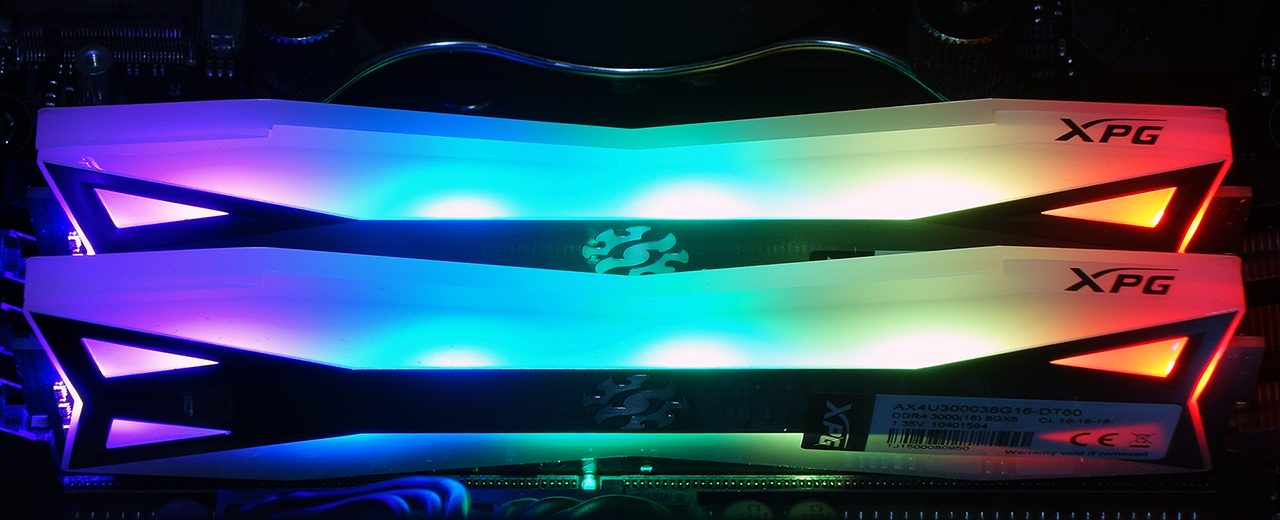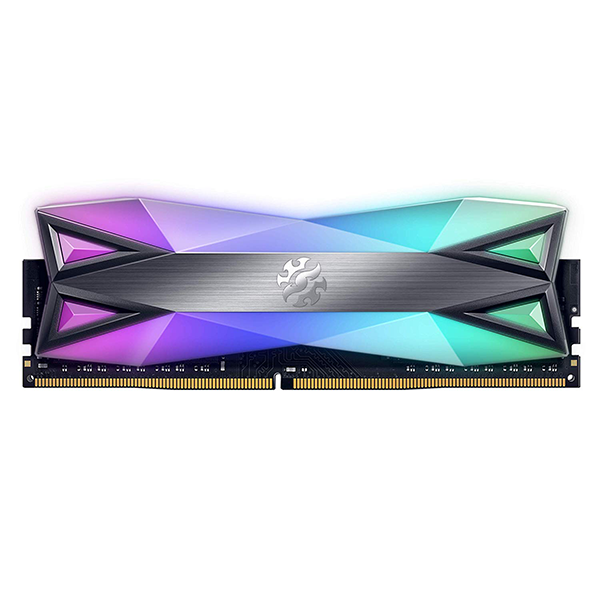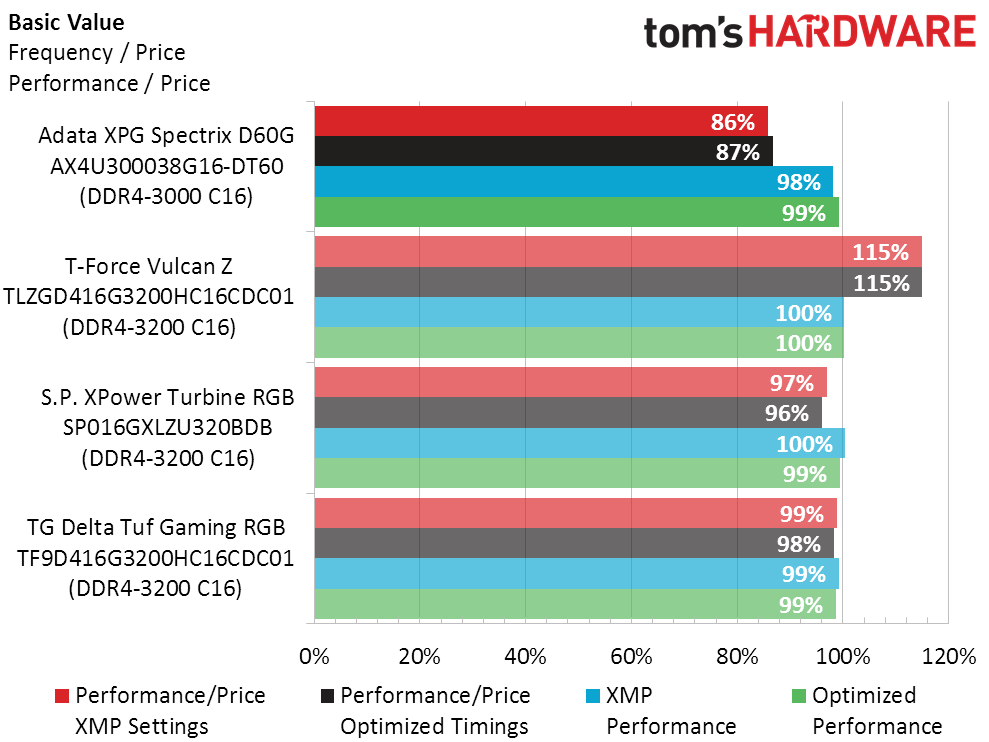Tom's Hardware Verdict
Despite lots of RGB at a decent price, mediocre performance and lower-priced competitors prevents us from recommending Adata’s D60G DDR4-3000 to users who aren't primarily interested in this kit's aesthetics.
Pros
- +
More lighted surface area to match showy RGB builds
- +
Excellent overclocking capability
- +
Value Priced
Cons
- -
Costs more than some other value-priced performance kits
- -
Mediocre performance for its price class
- -
Soft RGB hues
Why you can trust Tom's Hardware
Thanks to recent memory price drops and a hyper-competitive market at the lower end of the enthusiast memory range, great performance can often be had for under $100. Adata’s XPG Spectrix D60G offers similar customers a little more flash for only a few dollars more, but that price leaves its DDR3-3000 version to compete with cheaper DDR4-3200 from other brands. And while the Spectrix D60G isn't going to provide the same performance as DDR4-3200 that has similar timings, it probably gets close enough to that mark to convince a few RGB-focused builders.
Adata’s most-recent memory kit is all about the bling, but not the chromed-out way: D60G claims the world’s greatest amount of RGB surface area for memory, and it gets there not with more LEDs (these only have five per side) but with more plastic. A strip of aluminum over the chips is all we see of the “heat spreader” concept, as the rest of the cover is designed to diffuse light across a wide area.
Adata has much to say about the design, such as the percent of lighted area gained and a shape that supposedly resembles a diamond cut (if diamonds were milky?), but we’ll leave it to you to decide whether the appearance alone is reason enough to include these in your next build: We’re primarily interested in how these perform relative to their price.
D60G DDR4-3000 has two XMP profiles, the second dropping its DDR4-2666 default from CAS 19 to CAS 16 at the same reference-level 1.20V. Most boards that support XMP will also support the 1.35V required for its DDR4-3000 16-18-18 (tCAS, tRP, tRCD) rating, but the secondary XMP at least provides users whose data rate has been limited by the CPU or chipset a chance to improve performance via quicker access. Enhanced latency for DDR4-2666 should apply to XMP-capable H370 and B360 motherboards, for example, as well as non-K-series Intel Core i5 (and above) processors.
XPG Spectrix D60G is compatible with motherboard RGB software from ASRock, Asus, Gigabyte and MSI, but builders with boards that don’t support their own RGB solution need not feel left out: XPG RGB Sync is free to download and adds per-LED settings, so that we could freeze the rainbow-color pattern shown two images above and get a better photo.
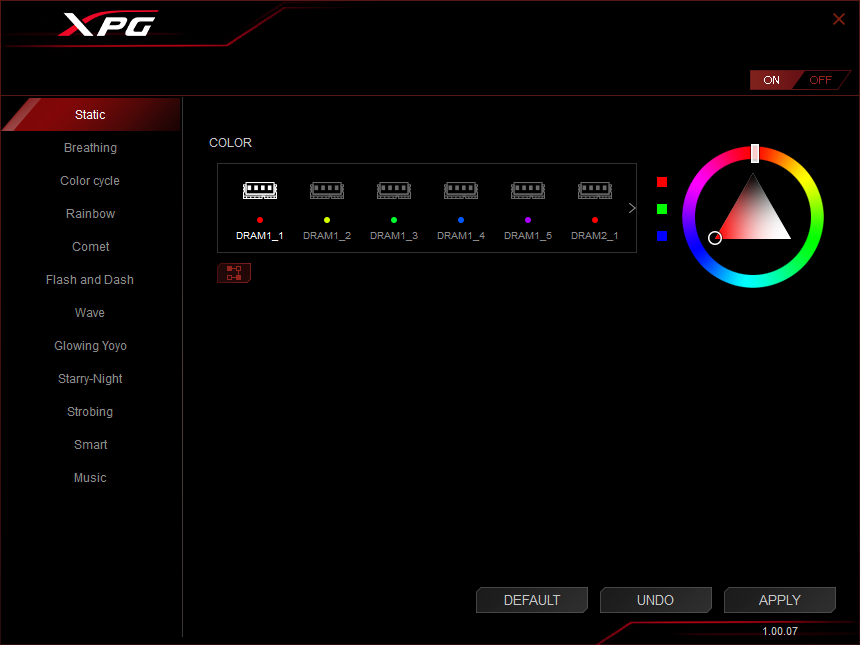
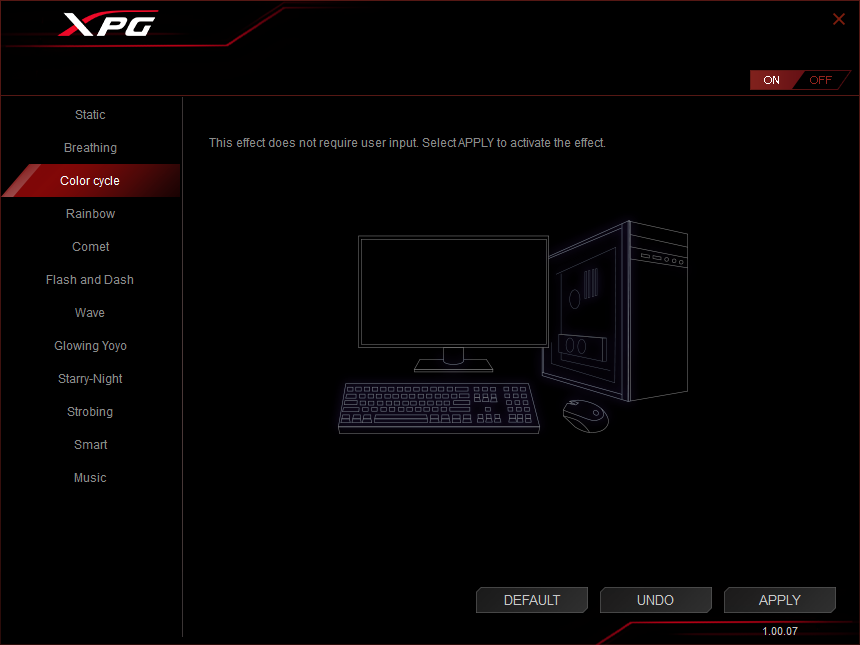

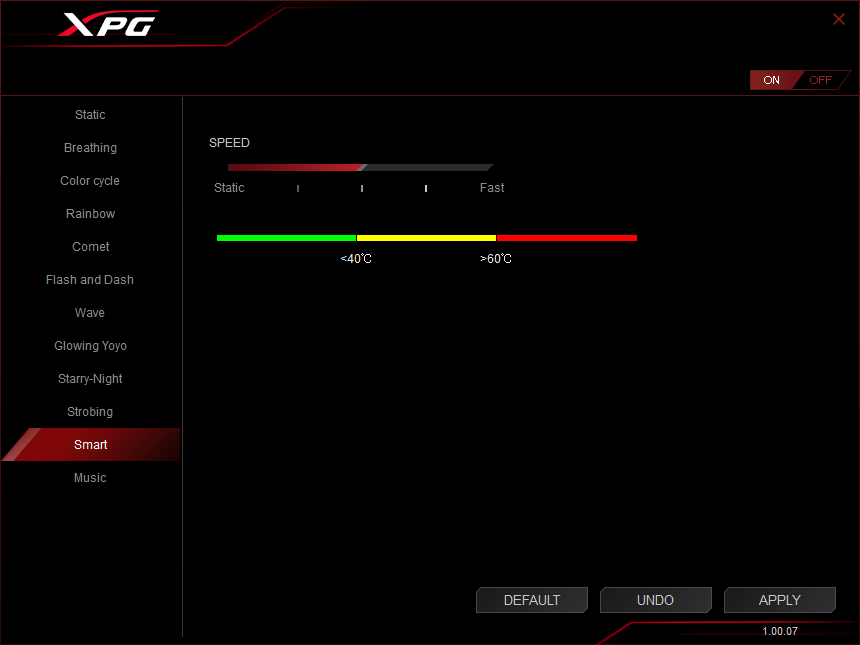
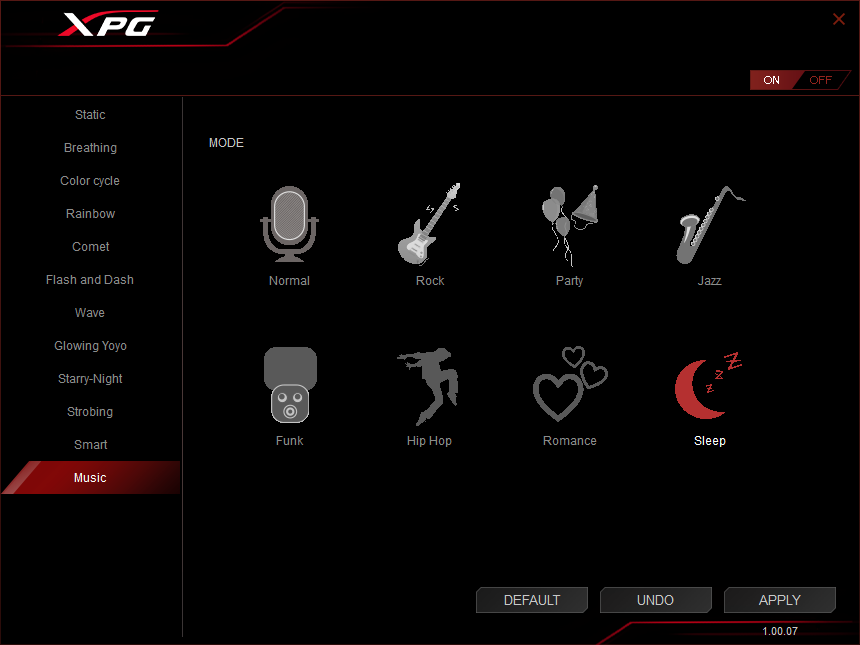
Comparison Hardware
It’s been a while since we’ve reviewed DDR4-3000, so the XPG Spectrix D60G is forced to compete against slightly-faster DDR4-3200 of recent reviews, including Teamgroup’s Vulcan Z and Silicon Power’s XPower Turbine RGB. This should all work out in the price-to-performance calculations, right?
Asus’s Maximus XI Hero hosts Intel’s Core i9-9900K processor at a fixed 4.80 GHz frequency in our memory test bed, using Fractal Design’s Celsius S24 to keep it cool. Toshiba’s OCZ RD400 NVMe SSD and MSI’s GTX 1080 Armor OC reduce non-DRAM bottlenecks.
Get Tom's Hardware's best news and in-depth reviews, straight to your inbox.
Overclocking & Latency Reduction
XPG Spectrix D60G DDR4-3000 falls just a tick behind Vulkan Z DDR4-3200 in ultimate overclocking capacity, but it’s also rated as being less capable. The fact that it beat two other DDR4-3200 kits is fairly impressive.
| Lowest Stable Timings at 1.35V (Max) on ROG Maximus XI Hero (BIOS 0805) | ||||
| DDR4-4000 | DDR4-3466 | DDR4-2933 | DDR4-2400 | |
| Adata XPG Spectrix D60GAX4U300038G16-DT60(2x 16GB single-rank) | ✗ | 16-18-18-36 (2T) | 13-15-15-30 (1T) | 11-13-13-28 (1T) |
| T-Force Vulcan ZTLZGD416G3200HC16CDC01(2x 16GB single-rank) | 19-21-21-42 (2T) | 16-18-18-36 (2T) | 13-15-15-30 (1T) | 11-12-12-28 (1T) |
| S. P. XPower Turbine RGBSP016GXLZU320BDB(2x 16GB dual-rank) | ✗ | 17-18-18-36 (2T) | 14-16-16-32 (1T) | 11-13-13-28 (1T) |
| TG Delta Tuf Gaming RGBTF9D416G3200HC16CDC01(2x 16GB single-rank) | ✗ | 16-18-18-36 (2T) | 14-15-15-30 (1T) | 11-12-12-28 (1T) |
The Spectrix D60G DDR4-3000 even matched the Vulkan Z's timings at both DDR4-3466 and DDR4-2933, though it dropped back a bit at DDR4-2400. Remember that shorter timings means quicker access, so that dropping back in performance means having a higher minimum latency.
Benchmark Results
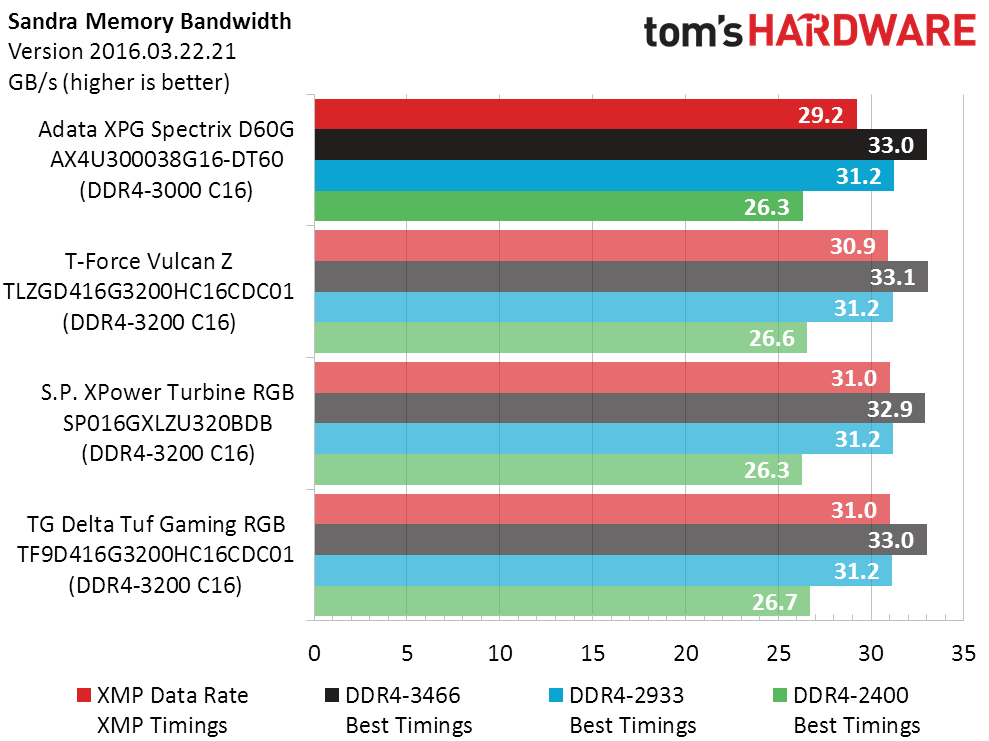
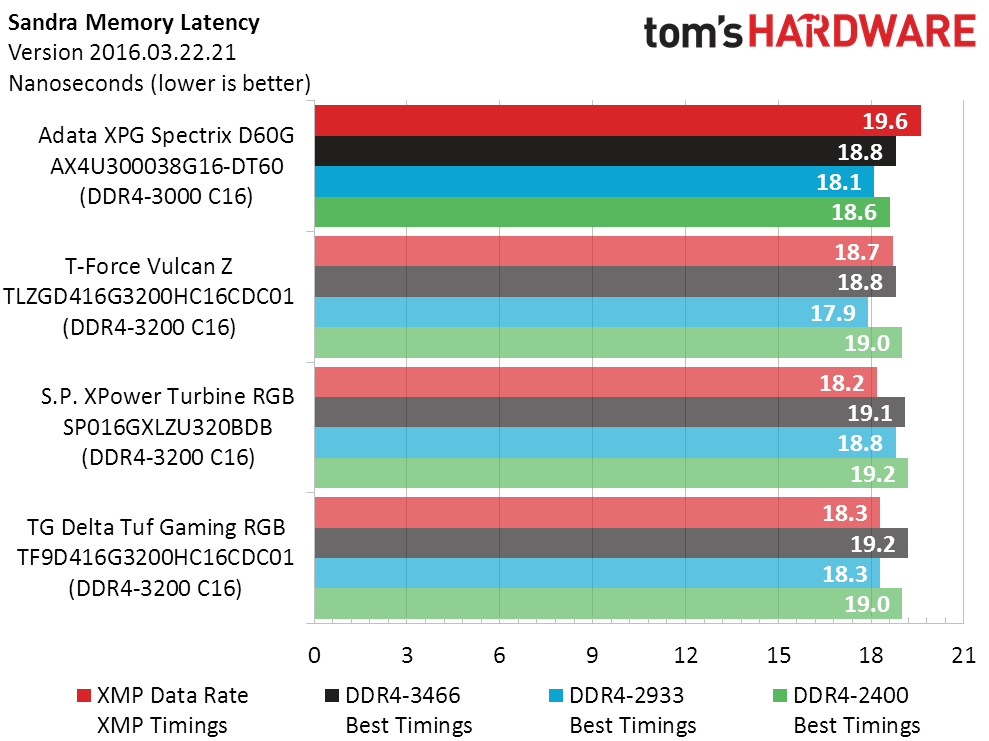
Unsurprisingly, DDR4-3000 has less bandwidth than DDR4-3200. And, since cycle time is the inverse of frequency, having the same number of latency cycles at the lower frequency means the DDR4-3000 kit has the highest latency. The Spectrix D60G kit competes far better in the overclocking arena.
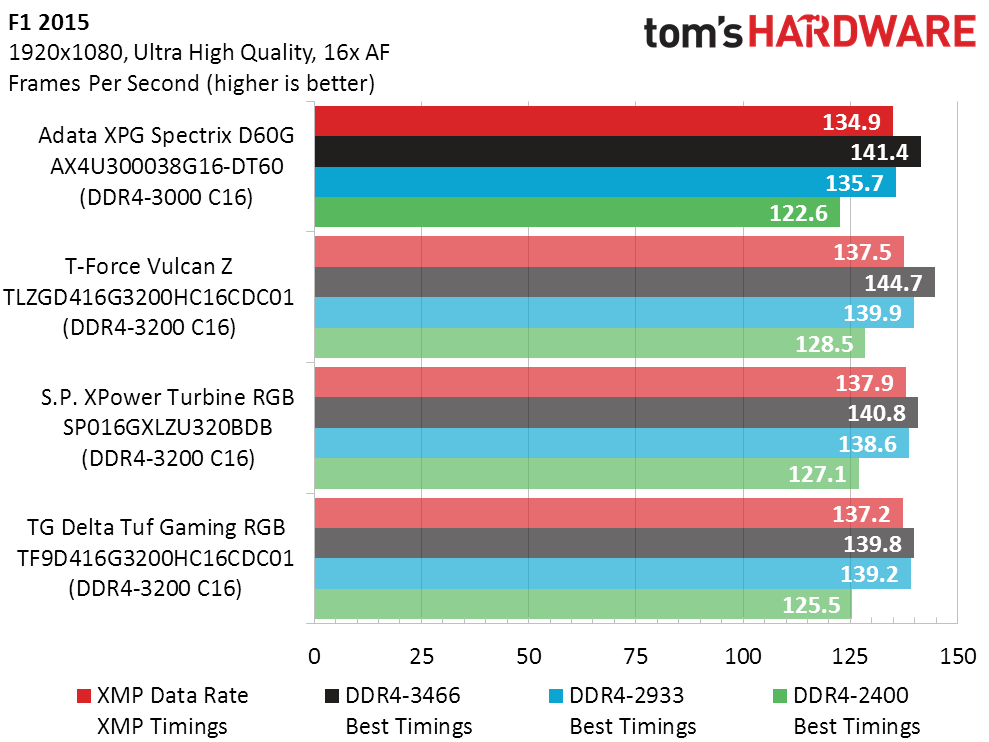
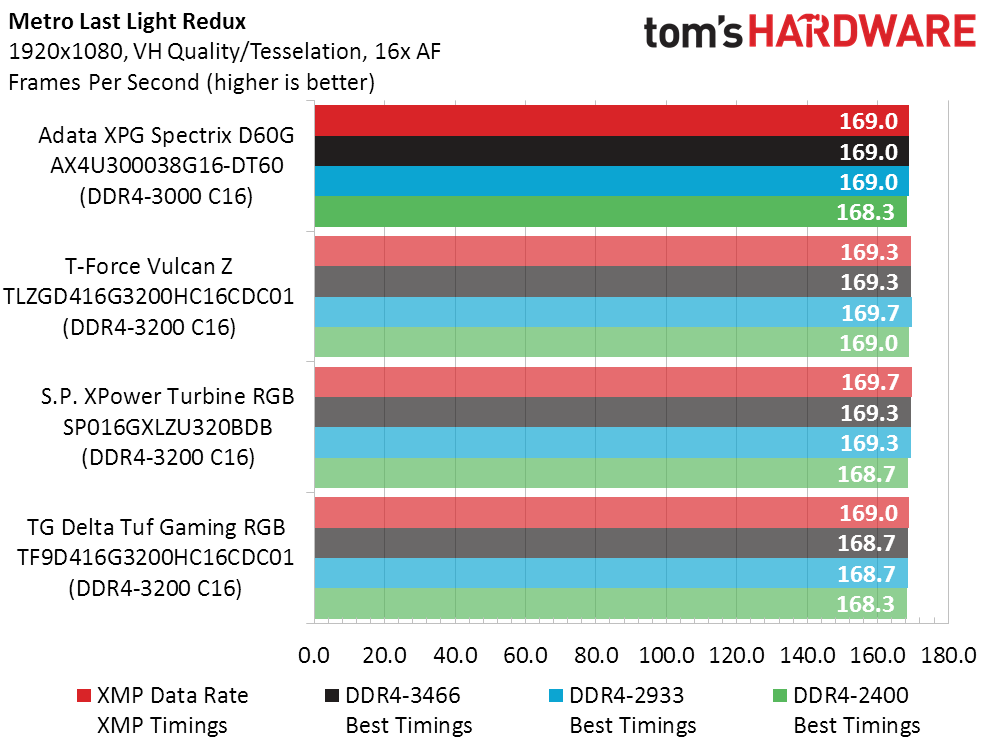

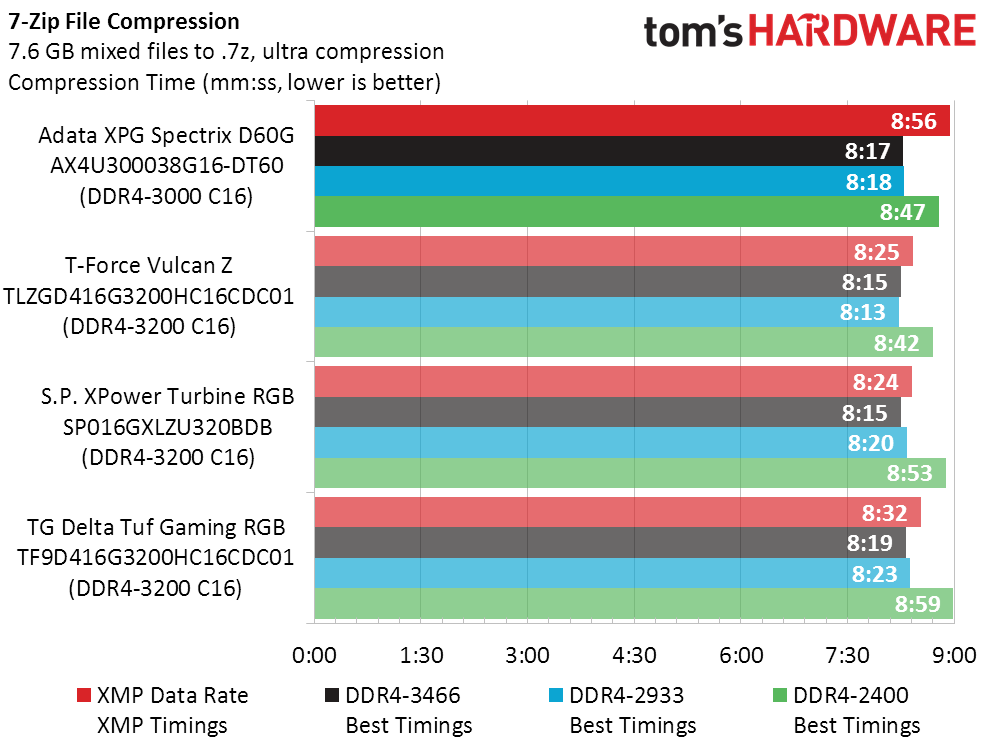
A few fewer FPS here, a few more seconds of task completion time there, and the D60G DDR4-3000’s XMP looks worse for the wear in our real-world benchmarks. But it’s still a top contender when all competitors are manually optimized.
Final Analysis
Teamgroup’s T-Force Vulcan Z took top place in performance-per-dollar, but that’s partly because it has no RGB. To make an Adata-Teamgroup face-off fair, we should instead consider its Delta Tuf Gaming RGB, which is still cheaper than the D60G.
Those buying D60G are likely looking for a certain design to match other RGB components, so perhaps “value” is a slightly less significant factor. Still, the more-expensive D60G underperforms the cheaper Delta Tuf Gaming RGB, which means choosing aesthetics over both value and performance simultaneously.
Of course this entire portion of the comparison shouldn’t matter to those running anything other than an Asus board, as revealed by Teamgroup’s continuing saga of underperforming when placed on ASRock, Gigabyte, or MSI motherboards. That leaves us considering Adata’s XPG Spectrix D60G DDR4-3000 only against Silicon Power’s XPower Turbine RGB DDR4-3200 for a broader recommendation. While the later performs better and costs less, we’re sure those differences are small enough that the show-build crowd will pick whichever of these best matches their other components.
Photo Credits: Tom's Hardware
MORE: Best Memory
MORE: DDR DRAM FAQs And Troubleshooting Guide
MORE: All Memory Content

